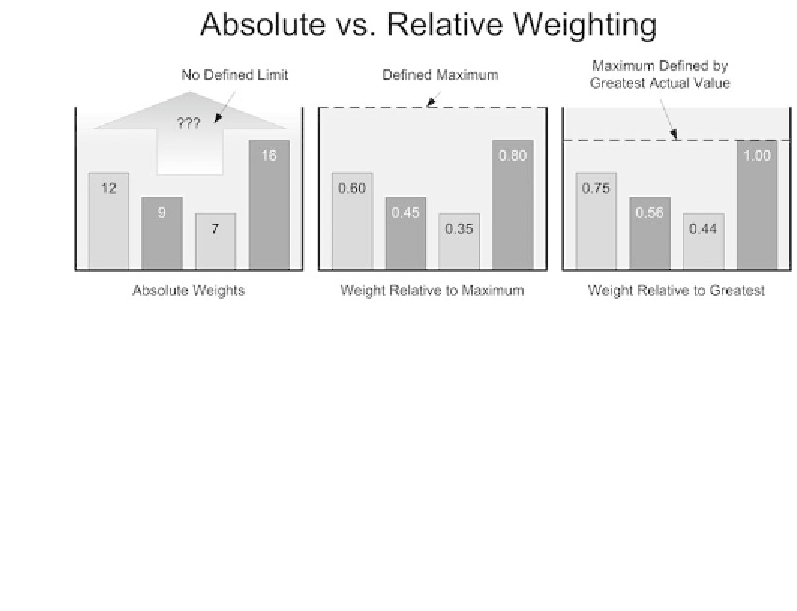Game Development Reference
In-Depth Information
game, you would have no idea whether that was good or bad. Only if you have
access to other people's scores, could you then compare my score directly to them
and determine whether or not my braggadocio is warranted.
FIGURE 13.1
By changing the context, we can refer to three otherwise
identical measurements in different ways. In the middle example,
we have defined an arbitrary maximum at 20 units.
Weights Relative to a Maximum
The second method we can use to assign values to a score is to compare the absolute
weight of what we are measuring to a different value that we predetermine as the
maximum possible value. In the middle of Figure 13.1, we see the same bars as used
in the left example. However, we have added the rule that the maximum value is 20.
The numbers shown in the bars are the
relative weights
to what they
could be
. For
example, the first bar in the graph is still an absolute size of 12, but in the context
of a maximum of 20, the score is 0.60. It is 60% of what it
could be.
Anyone who has taken a test is familiar with this sort of weighting. There is
usually a maximum score that we can achieve on the test. If we compare the score
that we actually receive to the maximum possible score, we arrive at a percentage.
This percentage gives us two pieces of information.
First, we can still compare different scores. We know that the 0.60 for the first
bar is better than the 0.45 for the second one but worse than the 0.80 of the fourth
bar. However, we can also determine the fitness of the scores themselves compared
to the maximum. Even if we have no other decision against which to compare, we
know where it falls in relation to what it
could be.
This is similar to how, while our
egos may be curious about how our test score compared to our peers, the grader
only really cares about how we did relative to the maximum.


